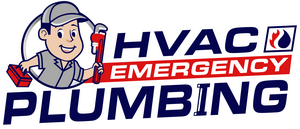11:23 PM The Evolution of Plumbing | |
The Evolution of Plumbing: From Ancient Innovations to Modern Conveniences
Plumbing is a field that has seen remarkable transformations over the centuries. From the ancient aqueducts to today's sophisticated systems, the journey of plumbing technology encapsulates human ingenuity and the quest for improved living standards. Here's a look at how the plumbing of the past differs significantly from modern practices.
Ancient Foundations The roots of plumbing trace back to ancient civilizations like the Greeks, Romans, and Indus Valley, where the initial developments were predominantly for public baths and removing wastewater. The Romans were particularly advanced, with their extensive aqueducts bringing fresh water into cities, and sewage systems that protected their streets from flooding and disease. Materials like lead and clay were commonly used for pipes.
Medieval Stagnation After the fall of the Roman Empire, plumbing progress significantly slowed during the medieval period. Much of Europe regressed to simpler methods of waste disposal, such as cesspits or directly discarding waste into the streets or rivers. It wasn’t until the Renaissance that there was a renewed focus on sanitary practices, although these were still primitive by today’s standards.
Industrial Revolution Advances The real transformation came with the Industrial Revolution in the 18th and 19th centuries. As cities grew, the need for structured plumbing systems became undeniable. Innovations such as the flush toilet by Thomas Crapper, and the development of underground sewer systems significantly improved urban sanitation. Cast iron and, later, copper were introduced as materials for water supply pipes.
Modern Plumbing Today, plumbing systems are designed with a focus on hygiene, efficiency, and conservation. Modern materials like PVC and PEX (cross-linked polyethylene) are used extensively for their durability and safety. Technology plays a crucial role, with innovations such as touchless faucets, low-flow toilets, and smart home water systems that detect leaks and monitor water quality and usage in real-time.
Environmental Impact and Efficiency One of the most significant differences in modern plumbing is the commitment to environmental sustainability. Contemporary practices and fixtures are designed to reduce water usage and minimize waste without sacrificing performance. Dual-flush toilets, water-efficient showerheads, and tankless water heaters are now common fixtures in homes, reflecting the eco-conscious ethos of modern times.
The Role of Regulations Another crucial aspect of modern plumbing is the regulatory landscape. Strict codes and standards ensure that plumbing products and practices meet safety and efficiency benchmarks. This regulatory environment is essential for maintaining public health and conserving resources. In conclusion, the evolution of plumbing from ancient to modern times highlights a trajectory of progress and sophistication. What started as basic channels carved from stone has evolved into complex systems that ensure health, comfort, and sustainability. As we continue to innovate and refine these systems, the future of plumbing looks to be as dynamic as its past.
| |
⏰ Dispatcher support 24/7
📞 224-754-1984CALL ☎ Subscribe 👆 FORUM 🗣
North Shore, Northwest suburbs of Chicago, IL
Next & Previous posts
| Total comments: 0 | |


